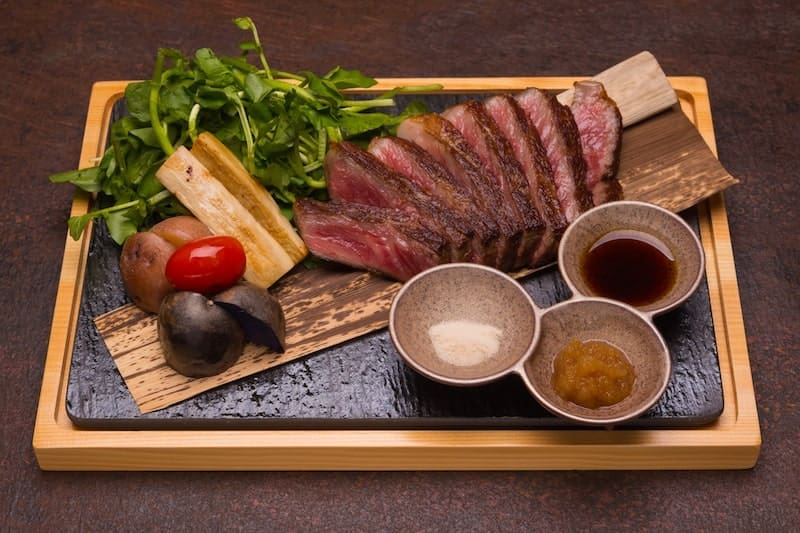Wagyu, often hailed as the most luxurious beef in the world, did not begin its journey as a global culinary icon. Its origins are deeply embedded in the agricultural and spiritual traditions of Japan, where cattle were historically regarded not merely as livestock but as revered companions in farming. For centuries, these animals were crucial to rice cultivation, especially in the mountainous regions where machines could not easily tread. As a result, cattle developed unique muscle structures and temperaments from years of plowing rice fields and climbing rugged terrain.
These early bovines, which eventually became known as Wagyu, were more than beasts of burden. In Japanese culture, there was a profound respect for the animals’ roles in sustaining agrarian life. Their care was meticulous, and selective breeding was guided by a philosophy of harmony and balance rather than profit. This spiritual connection led to a deep focus on the purity of the bloodlines, a practice that set the foundation for the premium quality of Wagyu beef seen today.
It was not until the Meiji Restoration in the late 19th century that Japan began to open its borders and integrate Western cattle into its breeding programs. Even then, efforts were carefully controlled to maintain the unique qualities of the indigenous strains. The result was a genetically distinct breed that combined the best of native endurance and Western muscle development. This marked the beginning of Wagyu’s transformation, from sacred agricultural partner to a delicacy coveted across continents.
Breeding for Perfection
Wagyu is not a single breed but a collection of several Japanese cattle breeds, most notably the Japanese Black, Japanese Brown, Japanese Shorthorn, and Japanese Polled. Among these, the Japanese Black accounts for the vast majority of Wagyu beef consumed both domestically and abroad. The success of Wagyu’s breeding programs is rooted in rigorous lineage tracking and a national grading system that measures not only marbling, but also color, texture, and fat quality. This stringent oversight has cultivated a product of consistent excellence and extraordinary flavor.
The Japanese government has played a pivotal role in preserving the integrity of Wagyu genetics. Export of live animals is highly restricted, and official pedigree registries are tightly controlled. Within Japan, elite Wagyu cattle are often sold at auction for astronomical prices, sometimes exceeding hundreds of thousands of dollars. These breeding bulls and heifers are seen as national assets, with their lineage traced back generations to ensure consistency in quality.
Internationally, the desire to replicate the success of Japanese Wagyu has led to various crossbreeding programs, particularly in the United States and Australia. While these efforts have introduced new interpretations of Wagyu to the global market, purists argue that true Wagyu remains intrinsically linked to its Japanese heritage. The origins of Wagyu can be traced to specific regions across Japan, where the cattle were bred in isolated prefectures over centuries, resulting in distinct bloodlines and characteristics shaped by climate, terrain, and local farming practices. These regional differences not only defined the physical attributes of the cattle but also contributed to the depth of flavor and marbling that Wagyu is known for today. Understanding where Wagyu beef comes from involves appreciating the cultural, environmental, and genetic factors that gave rise to this exceptional breed.
The Science Behind the Sizzle
The most iconic feature of Wagyu beef is its intricate marbling, or the fine web of fat interlaced within the muscle. Unlike traditional beef, where fat is typically found around the edges, Wagyu’s marbling is evenly distributed, resulting in a texture that melts in the mouth and a flavor profile that is both rich and delicate. This unique fat composition is not accidental but rather the result of generations of controlled breeding and meticulous feeding practices.
Wagyu fat contains a higher percentage of monounsaturated fats compared to saturated fats, making it not only tastier but also potentially healthier. It is also rich in oleic acid, the same heart-healthy component found in olive oil. This biochemical composition allows Wagyu to deliver a buttery mouthfeel without the greasy residue often associated with high-fat foods. When cooked, the beef renders slowly, giving off a distinctive aroma and creating a tender bite that is difficult to replicate.
To achieve this extraordinary quality, Wagyu cattle are raised under conditions designed to minimize stress and maximize comfort. Farmers employ tailored feeding regimens that include a mix of rice straw, barley, corn, and in some cases, even beer. The cattle are allowed to grow at a slower pace, sometimes taking up to three years to reach market readiness. These practices, combined with genetic predisposition, result in the exquisite beef that has captivated gourmets around the globe.
Global Expansion and Adaptation
Countries like the United States, Australia, and Chile have invested heavily in Wagyu breeding programs, often starting with a limited number of Japanese-imported embryos or cattle. These regions adapted Wagyu husbandry techniques to suit local environments and consumer preferences, leading to diverse expressions of the product that range from full-blood Wagyu to crossbreeds with Angus and other well-known varieties.
American and Australian Wagyu often feature more robust flavors, attributed to pasture-based diets and different finishing techniques. While purists might argue that these versions deviate from the true essence of Japanese Wagyu, others appreciate the accessibility and distinct profiles they offer. In the United States, for instance, Wagyu has found its way into everything from gourmet burgers to high-end steakhouse menus, bringing the experience to a broader audience without compromising entirely on quality.
Nevertheless, debate continues within culinary and agricultural circles about what qualifies as “real” Wagyu. The term itself is often used loosely, which has prompted some governments and industry groups to advocate for stricter labeling and transparency. As global demand grows, the need to protect the integrity of the Wagyu brand becomes increasingly vital, ensuring that consumers know what they’re paying for and what standards have been met.
The Economics of Indulgence
The market for premium beef has soared in recent years, with Wagyu at the forefront due to its high margins and aspirational branding. Individual cuts can command hundreds of dollars per pound, and entire carcasses have sold for record-breaking sums at auction. This price point is not arbitrary; it reflects the intensive labor, time, and resources required to raise Wagyu cattle to perfection.
The supply chain behind Wagyu is complex, involving small-scale farms, cooperative breeding organizations, and a network of inspectors and graders who ensure quality standards are met. These layers of oversight contribute to both the cost and prestige of the product. In Japan, the annual Wagyu Olympics serve as a showcase of breeding excellence, with awards influencing prices and reputation in the global marketplace.
Moreover, the economic footprint of Wagyu extends beyond the farm. High-end restaurants, luxury food retailers, and even tourism sectors in Japan benefit from the global fascination with Wagyu. For consumers, it is not merely a meal but an experience—a symbol of refinement and status. In an increasingly commodified world, Wagyu remains one of the few food products where craftsmanship, origin, and heritage can command such a premium.
Culinary Allure and Cultural Status
The appeal of Wagyu is not limited to its flavor but also includes the ceremony surrounding its consumption. In Japan, Wagyu is often served in formats that highlight its delicacy—thinly sliced for sukiyaki, gently grilled for yakiniku, or raw for sashimi-style preparations. Each method emphasizes different facets of its texture and taste, turning the act of eating into a cultural ritual that honors both the animal and the artisan.
Western kitchens have embraced Wagyu in ways that blend tradition with innovation. From dry-aged steaks and tartare to Wagyu-infused meatballs and artisanal charcuterie, chefs are constantly experimenting with new interpretations. What remains consistent is the meat’s ability to elevate any dish it graces. It has become a hallmark of exclusivity, often featured on tasting menus or paired with rare wines and spirits.
Beyond the plate, Wagyu has also emerged as a cultural icon. It appears in food documentaries, luxury branding campaigns, and even as a talking point among elite circles. The story of Wagyu resonates not only because of its taste but because it embodies the idea of dedication and craftsmanship. It is this story—steeped in tradition yet open to the world—that continues to enchant diners and chefs alike.
Challenges and the Road Ahead
Despite its many successes, the Wagyu industry faces significant challenges. Climate change, rising feed costs, and concerns over animal welfare are forcing producers to reevaluate traditional practices. In Japan, where many farms are family-run and aging populations are a concern, there is growing pressure to modernize without compromising heritage. Balancing sustainability with the high standards of Wagyu production is an ongoing struggle.
There are also threats from mislabeling and market dilution. As Wagyu becomes more popular, the risk of counterfeit or inferior products entering the market increases. Consumers may find themselves paying premium prices for beef that fails to meet true Wagyu standards. Regulatory bodies in both Japan and abroad are working to tighten controls and introduce certifications that reassure buyers of authenticity.
Yet there is reason for optimism. Innovations in genetics, feed science, and traceability technologies offer pathways to enhance both quality and sustainability. As the global palate grows more sophisticated and the demand for artisanal food rises, Wagyu is well-positioned to thrive. Its journey from sacred cattle to gourmet gold is far from over—it continues to evolve, telling a story that is equal parts history, science, and culinary artistry.


